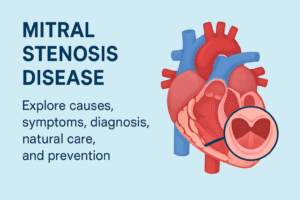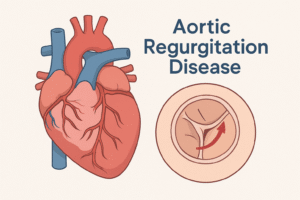Many of us have woken up one morning to find our eyes red, itchy, and watery. They feel heavy, sometimes stuck together, and looking in the mirror shows something is definitely wrong. This common problem is often called “eye flu,” though doctors know it as conjunctivitis.
Eye flu is one of the most common eye infections. It spreads quickly, especially during the rainy season or in crowded places. The good news is that it usually clears up in one to two weeks with proper care. Let’s explore what it is, why it happens, and how you can deal with it in the easiest way possible.
What Is Eye Flu?
Eye flu happens when the thin, clear layer covering the white part of the eye (called the conjunctiva) gets infected or irritated. When this layer swells, the eyes turn red and painful.
It’s like your eyes catching a small “flu.” They may water, itch, burn, or feel sticky. Though it’s irritating, in most cases it goes away naturally.
Causes of Eye Flu
Eye flu can happen for many reasons. The most common are –
- Viral infection – This spreads the fastest. You can catch it from sneezing, handshakes, or touching things touched by someone infected.
- Bacterial infection – Caused by germs like Staphylococcus or Streptococcus. It usually creates yellow or green sticky discharge.
- Allergies – Dust, pollen, perfumes, smoke, or pet hair can trigger red and watery eyes.
- Irritants – Swimming pool chlorine, pollution, or poor-quality makeup may also cause it.
So, eye flu can start from an infection, an allergy, or simply irritation.
Stages of Eye Flu
Eye flu usually develops step by step, not all at once –
- Early stage – Slight redness, watery eyes, and mild itching.
- Middle stage – Burning increases, redness deepens, and discharge appears.
- Peak stage – Eyelids may swell, eyes can stick shut in the morning, and vision gets blurry.
- Recovery – Slowly, redness and irritation fade, but eyes may stay sensitive to light.
Symptoms You Might Notice
If you’ve ever had eye flu, these will sound familiar –
- Redness in one or both eyes
- Burning, itching, or a sandy feeling
- Watery eyes for no reason
- Sticky discharge that makes it hard to open eyes in the morning
- Swollen eyelids in severe cases
- Sensitivity to light
- Mild headache or tiredness (if viral)
These signs usually start in one eye and spread to the other.
How Do Doctors Check It?
Most doctors can tell if you have eye flu just by looking at your eyes with a light. In some cases, they may:
- Take a sample of the discharge to see if it’s viral or bacterial.
- Suggest allergy tests if they think it’s seasonal or dust-related.
It’s a quick and painless check.
The Science Behind It
Eye flu can be of three main types –
- Viral conjunctivitis – Caused by viruses like adenovirus. Very contagious.
- Bacterial conjunctivitis – Caused by bacteria such as Staphylococcus or Streptococcus. Often has thick discharge.
- Allergic conjunctivitis – Caused by the body reacting to things like pollen or dust. Not contagious.
Knowing which type it is helps decide the right treatment.
Simple Home Remedies
Most mild cases of eye flu go away on their own. But you can make your eyes feel better with these safe home tips –
- Cold compress – Place a clean, cool cloth on your closed eyes to reduce redness and itching.
- Warm compress – Helps loosen sticky discharge.
- Cucumber slices – Cooling and soothing when placed on the eyes.
- Rose water – Pure, sterile drops can calm irritation.
- Saline rinse – Washes away dirt and reduces discharge.
- Aloe vera (around eyes, not inside) – Can reduce swelling.
⚠ Note – Avoid using random old eye drops or street remedies. If pain or blurred vision gets worse, see a doctor immediately.
How to Prevent Eye Flu
Prevention is the best cure for eye flu. Since it spreads fast, small steps can keep you safe –
- Wash hands often with soap and water.
- Don’t rub or touch your eyes too much.
- Never share towels, bedsheets, or makeup with others.
- Wear sunglasses outdoors to protect your eyes.
- Avoid dirty swimming pools.
- Stay away from people who already have eye flu.
Good hygiene is your strongest shield.
Who Gets It More Easily?
While anyone can get eye flu, some groups are more at risk –
- Children – They touch everything and then rub their eyes.
- Office workers and students – Crowded spaces make spread easier.
- People with weak immunity – Such as those with diabetes or long-term illness.
- Contact lens users – If lenses are not cleaned properly.
- People in humid areas – Damp weather helps germs spread faster.
Eye Flu Around the World
Eye flu may look like a small problem, but its global impact is big –
- Millions of cases every year worldwide
- School and office absences leading to lost productivity
- Clinics often flooded with patients during outbreaks
- Rare but serious cases where bacterial infections damage the cornea
Because of this, health experts everywhere stress awareness and good hygiene.
Final Thoughts
Eye flu is common and uncomfortable, but usually not dangerous. Most cases clear up in a week or two with rest, hygiene, and home remedies. The key is to avoid spreading it and to seek medical help if it worsens.
Our eyes are precious and sensitive. Even a small infection can disturb daily life. By treating them with care and keeping them clean, we can prevent unnecessary trouble.
So, the next time your eyes feel itchy, red, or watery, don’t panic—just handle them gently, maintain hygiene, and give them time to heal.
FAQs on Eye Flu (Conjunctivitis)
Q1. How long does eye flu last?
Usually 7 to 14 days. Viral cases clear on their own, bacterial cases may need treatment.
Q2. Is eye flu contagious?
Yes, viral and bacterial types spread quickly. Allergic conjunctivitis does not spread.
Q3. Can I go to school or office if I have it?
It’s better to rest at home to avoid spreading it to others.
Q4. Do I need antibiotics for eye flu?
Only for bacterial conjunctivitis. Viral and allergic types don’t need antibiotics.
Q5. Can eye flu damage vision permanently?
Rarely. Only untreated severe bacterial infections can harm vision.
Q6. What’s the best prevention?
Good hygiene—wash hands often, avoid rubbing eyes, and don’t share personal items.
Read this https://newsarmour.com/cardiac-arrest-causes-symptoms-treatment-prevention/






